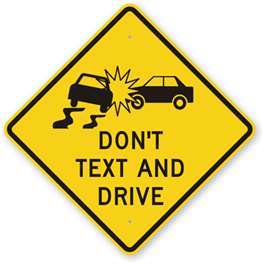Northwest drivers admit to cheating state texting laws
 |
SEATTLE--Feb. 19, 2014: It's both dangerous and illegal, but drivers still knowingly do it when they're behind the wheel: texting and phoning while driving. And the latest poll from PEMCO Insurance shows just how far some are willing to go to keep doing it without getting caught.
The PEMCO Insurance Northwest Poll shows that despite a general understanding of the laws, drivers – especially younger drivers – still break them. In Washington and the Portland, Ore., metro area, about half of those surveyed under age 35 say they sometimes text behind the wheel. About one-fifth of drivers under age 35 admit to talking on a hand-held phone at least sometimes while driving, as well.
The PEMCO poll shows that regardless of age, some drivers confess to evading law enforcement by attempting to conceal their cell-phone use.
"Many of us see fellow commuters holding a cell phone, maybe not to their ear, but near their face or on their lap while steering one-handed. The law's intent is to ban drivers from holding cell phones, period, because it's unsafe for everyone sharing the road," said Jon Osterberg, PEMCO spokesperson.
According to the poll, almost one-quarter of younger drivers and about 10 percent of all drivers admit to holding their phone, but away from their ear, when using their mobile phone while driving at least some of the time.
When it comes to texting, about one-quarter of drivers who fess up admit they hold their phone on their lap or below the window to avoid being seen, and 13 percent don't even try to hide it – they use their phone as if it were legal.
"Drivers know the danger of texting and driving, but our poll shows that people are still willing to risk harm by allowing their phones to distract them," Osterberg said.
The PEMCO poll revealed that about one-third of respondents rode in a vehicle driven by a texter in the past month and, of those passengers, 82 percent in Washington and 88 percent in Portland asked at least once that the driver stop texting.
On average, sending a text causes a driver to look away from the road for 4.6 seconds, according to the U.S. Department of Transportation (USDOT). At 55 miles per hour, a vehicle can travel the length of a football field while the driver's attention is diverted. USDOT estimates that drivers who text while on the road contribute to at least 100,000 collisions each year, and the National Safety Council estimates that cell phone use is a factor in nearly one in four crashes.
While many drivers claim they never text while driving, three-quarters of those who do say they only do it while stopped.
According to PEMCO, most residents know the law bans hand-held cell phone use for all drivers – stopped or not. But nearly one-third of all poll respondents didn't know it's still illegal to send or read text messages when sitting at a red light.
The poll indicates that drivers do attempt to use some measure of caution while on their cell phones. About half (48 percent) of young drivers (35 years of age or younger) in Washington say they use the speakerphone function while driving. Though those drivers may be well intentioned, USDOT reports that using a speakerphone or hands-free device can be just as distracting as holding the phone to make a call.
The PEMCO poll also reveals about one-third of Northwest drivers say they sometimes feel distracted behind the wheel in general, and younger drivers are significantly more likely than their older counterparts to say they feel distracted at least some of the time. About half of Washington drivers under 35 say they feel distracted sometimes or often, compared to 29 percent of those 35 and older. Drivers in Portland report similar numbers, with 42 percent of the under-35 age group and 29 percent of those 35 and older admitting to distracted driving.
To learn more about the PEMCO Insurance Northwest Poll and to view a summary of the results, visit PEMCO, where the public is invited to participate in an informal version of the poll and see how their own responses compare with those collected by FBK Research of Seattle in November 2013.


